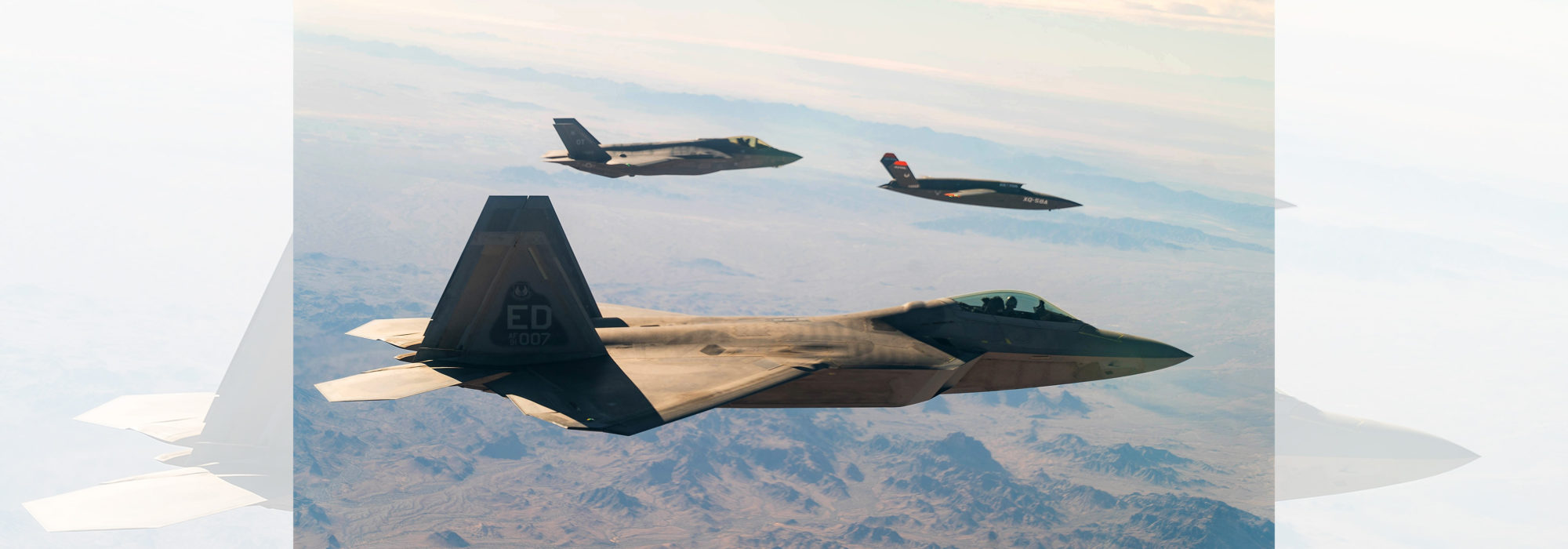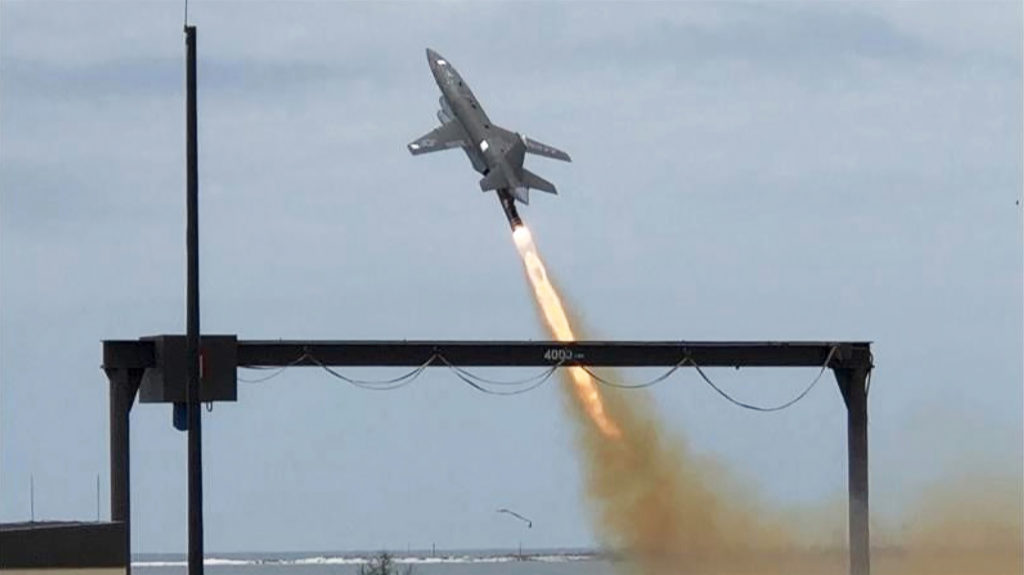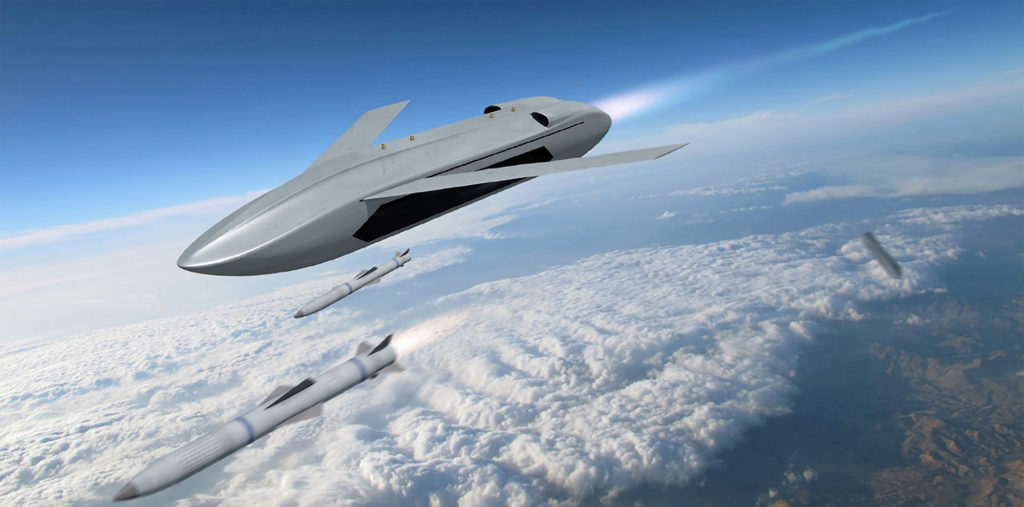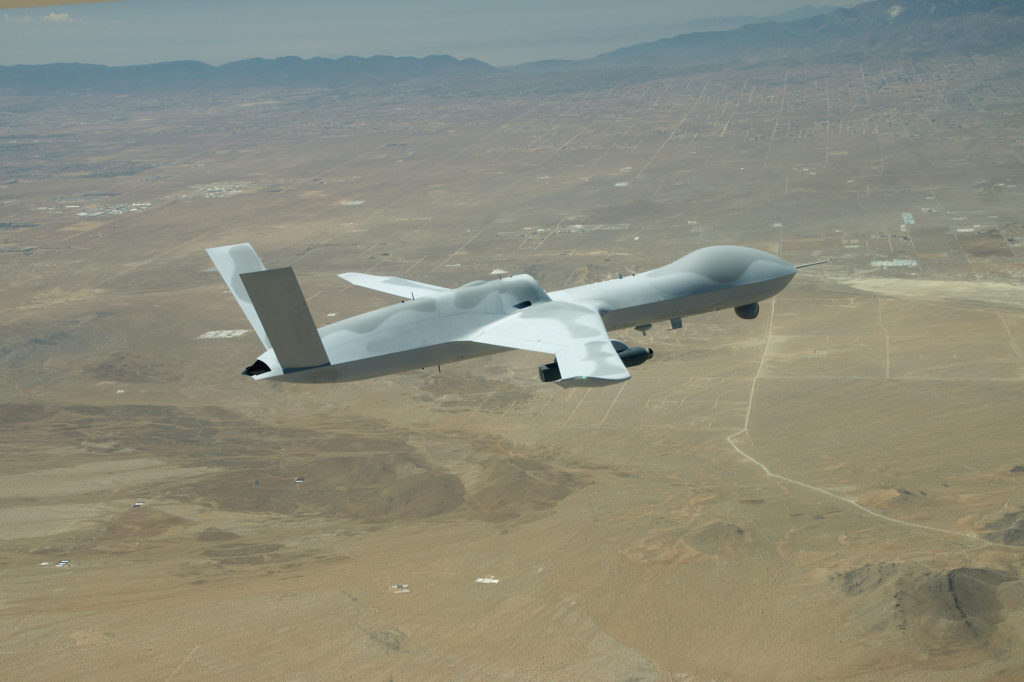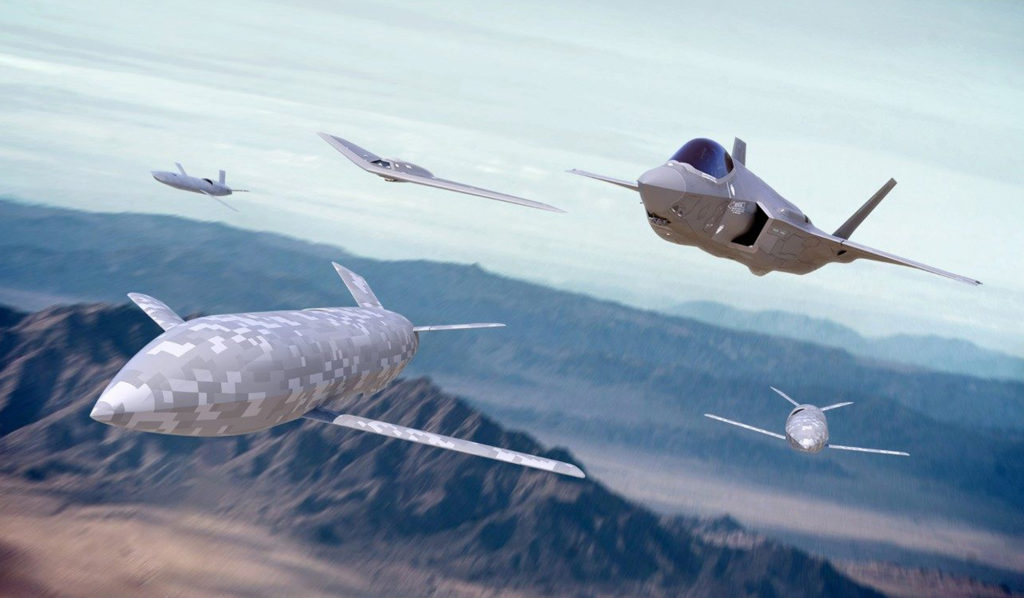The 5 Keys to Achieving Highly Collaborative Combat Aircraft.
After years of downsizing, today’s U.S. Air Force lacks the capacity, lethality, and survivability to win a decisive victory in a peer-level conflict with China. To address these shortfalls, Air Force leaders today are making significant decisions about the future force, betting on the promise of autonomous collaborative combat aircraft (CCA) as a means to increase the Air Force’s combat capacity, create a more attrition-tolerant and resilient force mix, provide theater commanders with a strategic reserve for surge operations, and enable complex operations that complicate adversaries’ defenses.
While this approach has great potential, CCA development efforts to date have focused primarily on mission tasks, not the collaborative nature of systems operating together, some crewed, the others not. The effectiveness of CCA in combat will be driven by how well they team with humans. It’s very important that highly experienced warfighters are integrated with skilled technologists to structure teaming dynamics, using human flying formations as models. Doing so will ensure CCA are optimally configured to achieving the effects desired in the battlespace in conjunction with inhabited aircraft.
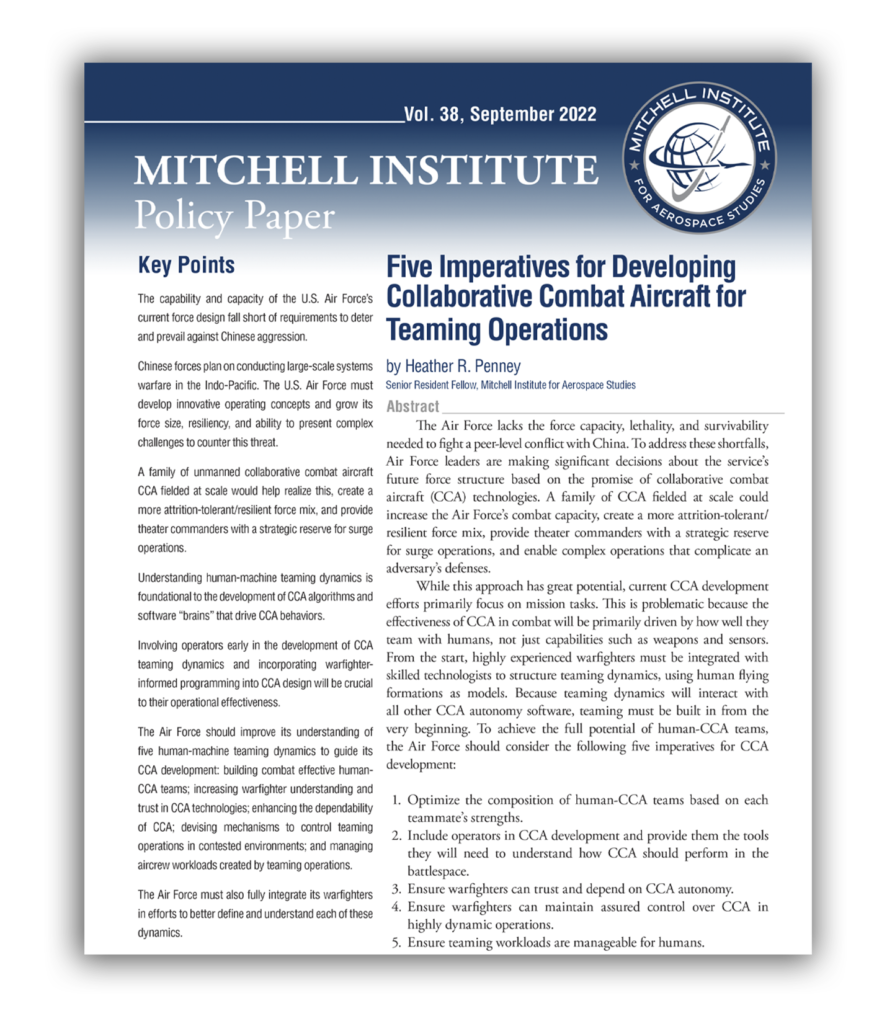
Heather Penney is a senior resident fellow at the Mitchell Institute for Aerospace Studies. Download the entire report here.
Unlike familiar remotely piloted MQ-9 Reaper or RQ-4 Global Hawk, which are controlled by human pilots using satellite datalinks, CCA will be autonomous, capable of navigating and flying themselves and of managing their own their sensors. They will make their own decisions and execute mission elements independently. They will team with human operators operating nearby in the battlespace and acting as flight and mission commanders, managing CCA much as they would lead a crewed formation.
The key to fielding effective CCA will be developing well-attuned human-CCA teaming software. This cannot be developed after CCA are fielded, because the teaming software must interact with all the other core elements of the CCA “brain.” For CCA to be successful, human factors must be integrated into teaming algorithms and software concurrent with all other autonomy development.
Fortunately, existing human formations can serve as established, high-performing models for technologists to emulate as they develop CCA teaming features. Conventional aircraft formations, whether a two-ship of fighters or an entire mission package, have proven processes, procedures, interactions, and other teaming and control structures. Decades of real-world experience have molded these teaming norms to human behaviors.
Yet in developing CCA, Air Force researchers, engineers, and defense industry technologists have largely focused their efforts on removing the human from the machine. This focus has enabled autonomy teams to make progress on important, foundational challenges related to CCA development, such as autonomous flight control dynamics, flight safety, battlespace awareness, and sensing and maneuvering. Therefore, it is imperative that operational combat pilots be involved in the process of determining how CCA should interact with humans and what information humans need for those interactions to be effective in real-world operations. According to Brig. Gen. Joe Kunkel that involvement is already underway.
Failure to develop CCA teaming concepts of employment and an understanding of related teaming functions will undermine their potential to transform the Air Force’s future battlespace operations. Therefore, warfighters involved in the early stages of the Air Force’s CCA development programs are critical to shaping how these autonomous aircraft will operate alongside humans in the battlespace.
Given the magnitude of strategic challenges Air Force leaders face and the faith and resources they are committing to developing multiple CCA variants, the stakes are too high to risk deferring questions of how crewed and uncrewed systems will work together. Involving operators early on in developing an understanding of CCA teaming dynamics is crucial to their future operational effectiveness.
THE AIR FORCE AT A CRISIS POINT
The Air Force is committed to developing collaborative combat aircraft transform the service’s force design to be able to fight and win against a peer competitor. Air Force leaders are making significant—and possibly irreversible—decisions about their service’s future force structure based on the promise of CCA technologies that are not yet mature. The Air Force is shrinking its current combat forces, retiring weapons systems before replacements are available, and even slowing procurement of new aircraft to fund this future vision.
It is a risky strategy. Today’s Air Force is now the oldest, smallest, and least ready in its history, the result of decades of deferred modernization. Two decades of high-tempo counterterrorism and counterinsurgency operations fueled declining aircraft mission capable rates and soaring operations and sustainment costs. Even now, demands on the Air Force remain undiminished. Combatant commanders increasingly ask for Air Force capabilities to respond to the aggressive actions of China and Russia, but the Air Force is no longer sized to meet those demands. For too long, Air Force leaders have claimed that the Air Force would continue to get smaller as it became “more capable.” Despite a handful of high-profile recapitalization programs, the Air Force acquired too few advanced aircraft over the past 30 years.
Today, 84 percent of the Air Force’s aircraft inventory were designed before the end of the Cold War for a very different set of threats than now exist in the Indo-Pacific and Europe. Upgrading the Air Force’s legacy aircraft have enabled them to remain effective, but only for operations in permissive environments. Most of the Air Force’s inventory remains vulnerable to modern air defense systems. As a result, the Air Force does not have the resilience or survivability needed to prevail in a highly contested, peer conflict. The “smaller but more capable” objective yielded a brittle force without the capacity to maintain a robust operational tempo, execute operations with sufficient concentration and mass, present complexity to an adversary, or tolerate attrition.
A NEW FORCE DESIGN
Chinese capabilities and warfighting strategies now present unprecedented challenges to the U.S. military’s legacy capabilities and operational concepts. High-tempo, large-scale military operations against China in the Indo-Pacific will require greater force capacity. Very long transit distances and expansive combat areas are the first of the Air Force’s challenges. Distance is time; even at high subsonic speeds, it takes an hour to transit from Kadena Air Base in Japan to targets areas around Taiwan; flights from Guam to Taiwan take four hours. The time it takes to get to the fight defines the numbers of aircraft needed to achieve and sustain high-tempo, large-scale operations.
Faced with too few aircraft, commanders must either reduce operational tempo or pause between attacks, creating opportunities for an enemy to gain or maintain an advantage. Similarly, the greater the size of the combat area, the more aircraft are needed to create massed effects simultaneously in multiple locations. Without sufficient capacity, planners must choose between diluting their attack coverage or narrow their target lists to mass effects in one area while neglecting others.
This is why defeating Chinese aggression in the Indo-Pacific is now the pacing threat to U.S. national security. Clearly, trading capacity for more capability is no longer a valid force design approach for the Air Force. What’s needed is more capabilities and greater capacity. No matter how technologically advanced a U.S. weapon system may be, conflict in the Indo-Pacific demands sufficient quantity. No aircraft can be in more than one place at one time.
This is not a theater where the U.S. military can afford to have “fewer but more capable” aircraft. Augmenting piloted aircraft with more affordable CCA may be a crucial way for Air Force leaders to achieve the capacity the Indo-Pacific demands. Industry studies have indicated that tethered CCA could increase a piloted formation at a ratio of six or seven CCA to one piloted aircraft. If CCA are untethered—operating in support of the broader mission package and not dedicated to a single flight lead—the multiplying effect could be even greater. Whether tethered, untethered or swarmed, CCA hold the promise to be force multipliers for the future Air Force, providing the numbers needed to achieve high-tempo operations at the scale the vast ranges of the Pacific demand.
The Department of the Air Force’s Scientific Advisory Board is investigating options for CCA with “a distributed, mission-tailorable mix of sensors, weapons, and other mission equipment” to be part of the NGAD family of systems.
Such mission packages could present targeting conundrums to the adversary and simultaneously augment crewed aircraft to deliver operational tempo and mass. They could also be controlled and deployed in different ways, said Dr. Tim Grayson, Special Assistant to the Secretary of the Air Force and former director of DARPA’s Strategic Technologies Office.
“You might take a CCA platform capability inspired by some of the [Next-Generation Air Dominance program] work, but not deploy it with an NGAD. It might actually be launched and, at least for initial deployment, operated by some other additional entity. And then, later on in the fight, reform a new formation … reform even a new team, where you know the command and control might fall over to a different platform. We’ve seen some of this in some of the studies that have been done between NGAD and B-21 … where there could be a little bit of … dynamic mix and match of who’s going to form the offensive line, so to speak, and who’s going to be the quarterback.”
Air Force Secretary Frank Kendall is intrigued with CCA. “The technology is there now, where we can talk about a formation of a crewed aircraft controlling multiple uncrewed aircraft,” Kendall said during a Jan. 19 forum with the Center for a New American Security. “There’s enough technology in existence from programs that we’ve already conducted, it convinces me that’s not a crazy idea.” Not long after, at a different event, he said: “It is reasonably clear to me that we are poised to go ahead and take a significant step forward in that area.”
Both phases of DARPA’s ACE (Air Combat Evolution) program concluded that humans must be able to trust CCA to conduct “complex combat behaviors” in order to progress to the kind of “hierarchical framework” that would define human-CCA interactions.
To support his objective, technical efforts appear to remain focused on building human trust through consistent and dependable autonomous maneuvering. Lockheed Martin’s Have Raider I and II demonstrations sought to display the ability of an AI-controlled aircraft to credibly navigate through a dynamic environment. According to program manager Shawn Whitcomb, Have Raider “put a fully combat-capable F-16 in increasingly complex situations to test the system’s ability to adapt to a rapidly changing operational environment.” In its first demonstration, the AI-controlled F-16 flew in formation with its crewed flight lead, executed a strike, and then rejoined the formation of the human-piloted aircraft. In the second, the Have Raider AI autonomously responded to its changing threat environment during an air-to-ground strike mission.
Boeing’s MQ-28A Ghost Bat, Australia’s Loyal Wingman pathfinder, is intended to “investigate factors such as the level of automation and autonomy, use of artificial intelligence, and human machine teaming concepts.” But Boeing program managers appear to have a much broader vision: to prove not just the airframe, but the entire system—including command interfaces, modular sensor packages, maintenance regimes, datalinks, and software. Ghost Bat completed its second phase of basic flight test series in late March 2022.
The Air Force Research Laboratory’s Off-Board Sensing Station (OBSS) developmental aircraft effort also has the potential to move beyond its demonstration phase. AFRL’s statement of objectives seeks to “develop and flight demonstrate an open architecture aircraft concept to achieve the goals of rapid time-to-market and low acquisition cost … [and] designed for limited life … no depot maintenance and limited field maintenance considerations.” General Atomics and Kratos have one-year contracts that come with options to continue Skyborg technical development.
CREWED vs. UNCREWED
The Air Force does not have the capacity to train and absorb pilots at the rate needed in a peer conflict. Combat losses would require the Air Force to replace downed pilots, but, even now, with too few aircraft, the service has been unable to overcome a years-long pilot shortage. Diminished aircraft inventories and readiness rates challenge the Air Force’s ability to provide new pilots the training hours needed to survive and be successful in combat. The high attrition rates of a peer conflict would only stress these dynamics more.
Meanwhile, recent advances in computer processing, datalinks, software programming, and autonomy offer an alternative. The Air Force could now field teams of collaborative combat aircraft that can solve major gaps in the Air Force’s force design, multiply the combat power of its mission packages, and counter China’s system destruction strategy. CCA will also be able to execute mission-essential roles, maintain high-levels of execution through attrition, increase complexity, and impose cost on an adversary. For CCA to do these things at scale, they must operate without the crewed control stations and limitations of conventional remotely piloted aircraft. Rather, uncrewed aircraft must become effective in complex environments without the need for direct human control of either flight systems or sensors, while also teaming with humans in spectrum-contested battlespaces. This will enable the Air Force to scale to meet the requirements of future warfare.
CCA will enable the Air Force to create new operational concepts combining the respective strengths of crewed and uncrewed aircraft to achieve mission objectives. Human intuition, cross-domain thinking, and intelligence will remain essential to mission success, and partnering with CCA could allow humans to focus on critical cognitive tasks, such as dealing with unforeseen events and managing battlespace operations.
Human-CCA teams can reduce risks to humans, increase the potential to create war-winning mission effects, and disrupt adversaries’ warfighting strategy. Because planners and mission commanders can accept higher CCA losses, they can think differently about risk tolerance. Teamed with crewed aircraft in force packages, collaborative combat aircraft can be employed more aggressively, for instance by acting as “missile sinks” that soak up enemy air-to-air or surface-to-air missiles. CCA losses in combat—even at scale—need not have as dire an impact on specific missions, the long-term viability of the force, or the overall campaign, provided CCA are acquired in sufficient volume. The attrition tolerance that CCA offer may have the added benefit of imposing cost on the adversary, an important feature in any competitive strategy.
CCA can fundamentally alter the attrition equation for commanders because they reduce risk to highly experienced aircrew. Human cognition, insight, intuition, and other unquantifiable elements will continue to be key to successful combat operations. An underappreciated problem of combat attrition is the loss of experience in the front-line force. By absorbing losses, CCA forces can protect experienced human warfighters that often make the difference in operational and tactical outcomes. Moreover, when a CCA is lost, its replacement can be fielded with the exact same levels of competence, because unlike humans, where skill varies by training and experience, machine skills are based on program updates.
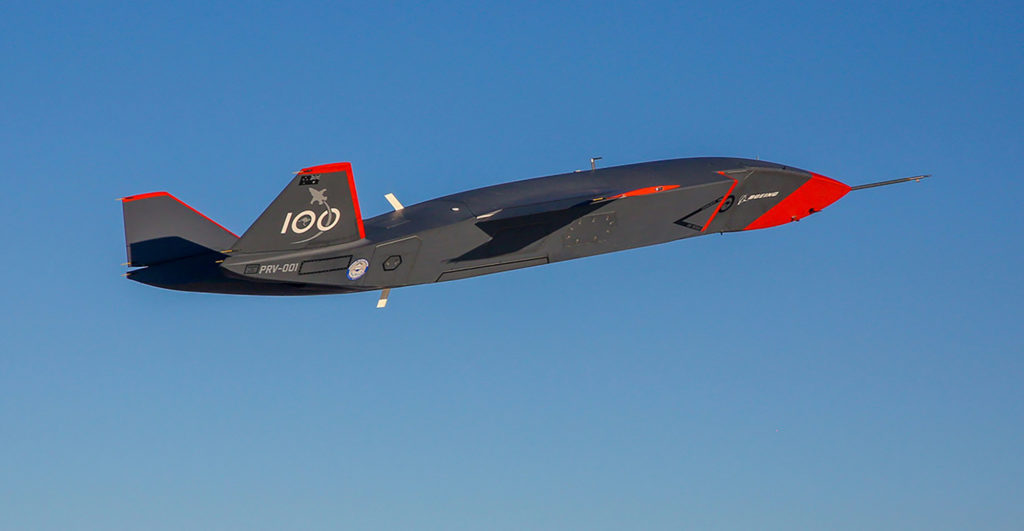
NECESSARY ELEMENTS
Without question, the Air Force’s research labs and industry teams are making progress on important, foundational challenges related to CCA development like autonomous flight control dynamics, flight safety, battlespace awareness, tactical decision making, and sensing and maneuvering. The Air Force must deliberately prioritize human factor engineering as a first principle for developing CCA, with particular attention to five broad teaming concepts required to meet the needs of warfighters in complex and demanding battlespaces:
Create teaming concepts that will maximize the strengths of both CCA and piloted aircraft. The effectiveness of CCA in combat will be primarily driven by how well they team with humans, and not just the weapons and sensors they carry. The Air Force has yet to develop and articulate the operational concepts that describe the advantages autonomous CCA teammates may provide in the battlespace. As a result, it is unclear how CCA will operate, maneuver, and otherwise partner with humans to exploit their potential advantages. To harness the full potential of CCA, the Air Force must develop teaming operational concepts; teaming concepts of employment; and tactics, techniques, and procedures for how warfighters will work with CCA to exploit their unique attributes. Humans will then need robust, real-world training to master these tactics and develop confidence that CCA will provide them the combat edge they need in highly contested battlespace.
Include operators in CCA development to ensure they understand how they will perform in the battlespace. Autonomy and machine learning programs are notoriously opaque, making them inexplicable to warfighters. Without an understanding of how CCA think, make decisions, and why they take certain actions, warfighters cannot anticipate how these autonomous teammates will behave. Involving warfighters in CCA development can help inform and shape them while improving warfighter understanding of a CCA’s agent and outcomes. It would also improve human pilots’ ability to exploit the strengths and unique attributes of their teammates while mitigating their vulnerabilities in complex and contested battlespace.
Warfighters must be able to depend on CCA autonomy.
It will be difficult for warfighters to assess the dependability of their autonomous teammates if they lack the means to evaluate the real-time performance and accuracy of their CCA. This concern goes beyond the traditional DOD operational software tests for verification and validation or concerns regarding “hackability.” Humans will need confidence that their teammates will consistently maneuver safely and effectively as a teammate, have an accurate and shared understanding of the battlespace, share critical information in a timely way, maintain the same tactical priorities, defer to their human’s control—just as a wingman defers to their lead in combat—and behave in ways that human warfighters expect and need.
Warfighters must have assured control over CCA in highly dynamic operations.
Human operators must have resilient and reliable means of controlling their CCA teammates in spectrum-contested environments where adversaries are attacking information networks to deny or collapse command and control across the force. CCA must continue to effectively operate to achieve their missions without communications in worst-case contingencies where datalinks are denied or breakdown. Moreover, humans must be able to dynamically adjust their level of control over their autonomous teammates based on real-time battlespace demands—especially when human task loads are high and the situation may be surprising, unexpected, or confusing.
Human workloads must be manageable.
Humans must be able to communicate, collaborate, and control their CCA teammates with the least amount of friction inside their own cockpits, even as their own task-loading increases in complex battlespace. Warfighters will not find CCA useful if managing their CCA teammates detracts them from performing their primary mission duties to the extent it jeopardizes mission success. These concerns extend beyond flight control mechanics to include communication, coordination, and other mission integration tasks.
RECOMMENDATIONS
As vital as autonomous teammates are to the Air Force’s future force design, CCA technologies are not yet mature, nor are they fully embraced by the operator community. Defense industry and Air Force research labs have primarily focused on decomposing mission tasks in solving the many complex technical problems associated with developing autonomous CCA. Yet despite incredible progress, efforts to date have neglected developing an understanding of how CCA should team with piloted aircraft to achieve operational success.
By involving warfighters in CCA development, the Air Force can build trust and ensure CCA perform specific teaming functions and tasks effectively. The foundational teaming behaviors that will make CCA successful will also interact with their other mission tasks and cannot be bolted on after fielding. Understanding, mapping, and decomposing how humans interact and integrate with each other in piloted formations can offer early and crucial insights to how these teaming dynamics may be structured, even as those collaborations and formations evolve.
To achieve this, Air Force leaders should:
1. Optimize the composition of human-CCA teams.
- Identify the key relative strengths and weaknesses of humans and CCA to build the right human-CCA teams.
- Develop concepts of employment and tactics, techniques, and procedures to exploit these team strengths and mitigate their shortfalls.
- Program teaming dynamics into CCA, modeled on proven human-human combat team interactions.
- Build a mastery of CCA teaming through continual test and training.
2. Include operators in CCA development and provide them the tools they will need to understand how CCA will perform in the battlespace.
- Involve warfighters in developing CCA explainable machine learning user interfaces.
- Develop interactive mission planning, mission rehearsal, and debriefing tools to support continual learning and mastery of CCA performance and teaming operations.
3. Build trust so warfighters can trust that CCA will consistently behave as expected.
- Develop methods and processes for warfighters to assess the real-time integrity, performance, and accuracy of CCA operations.
- Provide warfighters feedback on CCA algorithm integrity and data security.
- Human teammates should be able to monitor and assess CCA battlespace awareness to identify situations where actions are needed to compensate when CCA encounter situations they are not trained for.
4. Ensure warfighters have assured control over CCA in highly dynamic operations.
- Teammates should flexibly and appropriately shift between different control paradigms over the course of a mission.
- CCA must proactively and responsively communicate with humans to assure control.
- The Air Force must prioritize resilient connectivity as a technical priority for teaming efforts and develop “comm-out” contracts for CCA.
5. Ensure operational workloads remain manageable for humans.
- Technologists must collaborate with warfighters to develop intuitive human interfaces.
- CCA command and control interfaces must be fully integrated into the warfighter’s weapon system operational flight program.
Autonomous aircraft will not replace humans in the battlespace. Well trained, highly performing human pilots will continue to be the essential qualitative advantage in highly contested peer conflicts because of their cognitive flexibility, adaptation, intuition, and other ineffable human traits. Yet collaborative combat aircraft have the potential to do far more than simply augment human missions. CCA can become true force multipliers for the Air Force—as long as teaming operational concepts, software, interfaces, and other capabilities are developed correctly.
Human warfighters will be the keystone to this transformation. Only human warfighters can provide their exclusive insight into the demands of teaming operations in uncertain, highly dynamic combat environments. To exploit the full potential of CCA, Air Force leaders, policymakers, and technologists must focus on creating effective human-CCA teams—placing greater emphasis on building human-CCA teaming dynamics as they aggressively pursue the development of CCA. Failing to do so risks not just less-capable CCA; it risks losing the next war.
